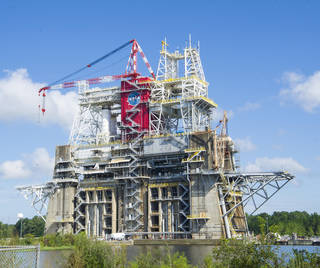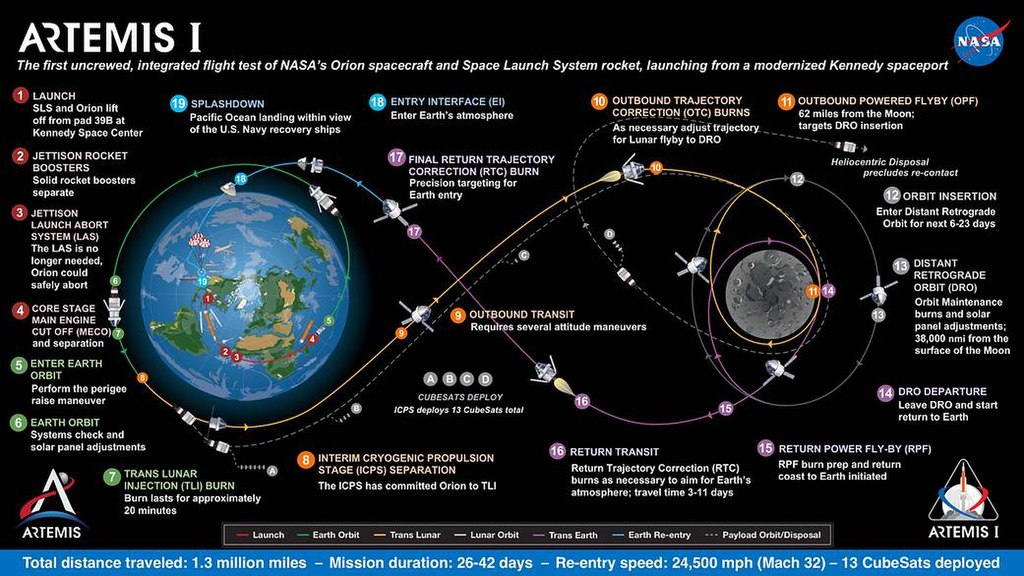The Space Launch System (SLS) core stage, a linchpin of NASA’s Artemis program and one of the largest rockets ever built, has left the factory. This rocket, when it is launched, will be one of the largest rockets ever to fly in the history of humankind.
Before then, it must go through a series of rigorous tests to ensure that it is safe for the eventual Orion capsules, and the crews aboard them, to fly aboard such a titanic creation. To do this, it will be transported from the Michoud Assembly Facility to the Stennis Space Centre, onboard the modified barge “Pegasus“, which previously transported Shuttle External Tanks to Cape Canaveral.

Photo credit: NASA
At Stennis, the first core stage will complete a ‘Green Run’, which will comprise a series of tests culminating in an eight-minute engine firing of the core stage, simulating the requirements of an ascent to orbit. This test, to take place later this year, will allow for any issues to be spotted before flight, increasing the likelihood of a successful 2024 Artemis landing.
After the Green Run is successfully completed, this SLS core will then be transported to the Kennedy Space Centre for the pre-flight processing, stacking and launch of the Artemis 1 mission. Artemis 1’s payload is comprised of an uncrewed Orion capsule, which will be delivered to a trans-lunar trajectory. After arriving at the Moon, the Orion will burn its main engine to enter into a distant retrograde lunar orbit, orbit for six days, then return back to Earth.

Photo credit: NASA
Artemis 1 is crucial for the success of the Artemis Program, as it tests both the SLS’ and the Orion spacecraft’s ability to fly humans to the Moon and (in the latter case) return them safely to Earth. As such, the launch (to take place in 2021) cannot fail if NASA aims to complete the directive it’s been given.
There was some debate surrounding the Green Run, and whether it should be removed from the test schedule in order to launch the SLS sooner. However, NASA eventually decided to continue with the Green Run, in spite of the overwhelming time pressure, because “Astronaut safety is our #1 priority” and it “increases probability of a successful moon landing in 2024”.
However, the departure of the first SLS core stage from its assembly facility has also been met with criticism. This is due to the incredible delays and cost overruns that have characterised the program, with Boeing (the main manufacturer of the SLS core stage) management repeatedly displaying incompetence. For example, this first core stage has taken five years to build, with an originally planned launch date of 2019. (Delays, while common in the complicated aerospace industry, are rarely as severe.)
This has drastically improved recently, as NASA’s new Administrator Jim Bridenstine has effectively lit a fire beneath Boeing by threatening to use other, smaller, rockets, a move that has been unprecedented by NASA officials, but has been met with widespread support.

Photo credit: NASA
If the Artemis Program does indeed achieve its goal of landing the first woman and next man on the lunar surface, then this milestone will certainly be celebrated. However, with the rapidly approaching launch date of 2024, and a possible order for 10 more SLS rockets, it remains to be seen as to the real legacy of this event.
Featured image courtesy of NASA

